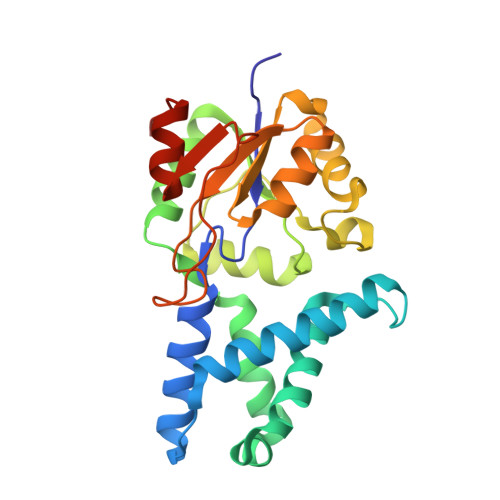Deciphering the stereo-specific catalytic mechanisms of cis-epoxysuccinate hydrolases producing L(+)-tartaric acid.
Dong, S., Xuan, J., Feng, Y., Cui, Q.(2024) J Biological Chem 300: 105635-105635
- PubMed: 38199576
- DOI: https://doi.org/10.1016/j.jbc.2024.105635
- Primary Citation of Related Structures:
8WBK, 8WBL, 8WBM, 8WBN, 8WBO, 8WBP, 8WBQ, 8WBR, 8WBS, 8WBT - PubMed Abstract:
Microbial epoxide hydrolases, cis-epoxysuccinate hydrolases (CESHs), have been utilized for commercial production of enantiomerically pure L(+)- and D(-)-tartaric acids for decades. However, the stereo-catalytic mechanism of CESH producing L(+)-tartaric acid (CESH[L]) remains unclear. Herein, the crystal structures of two CESH[L]s in ligand-free, product-complexed, and catalytic intermediate forms were determined. These structures revealed the unique specific binding mode for the mirror-symmetric substrate, an active catalytic triad consisting of Asp-His-Glu, and an arginine providing a proton to the oxirane oxygen to facilitate the epoxide ring-opening reaction, which has been pursued for decades. These results provide the structural basis for the rational engineering of these industrial biocatalysts.
Organizational Affiliation:
CAS Key Laboratory of Biofuels, Shandong Provincial Key Laboratory of Synthetic Biology, Qingdao Institute of Bioenergy and Bioprocess Technology, Chinese Academy of Sciences, Qingdao, China; Shandong Energy Institute, Qingdao, China; Qingdao New Energy Shandong Laboratory, Qingdao, China; University of Chinese Academy of Sciences, Beijing, China.






















